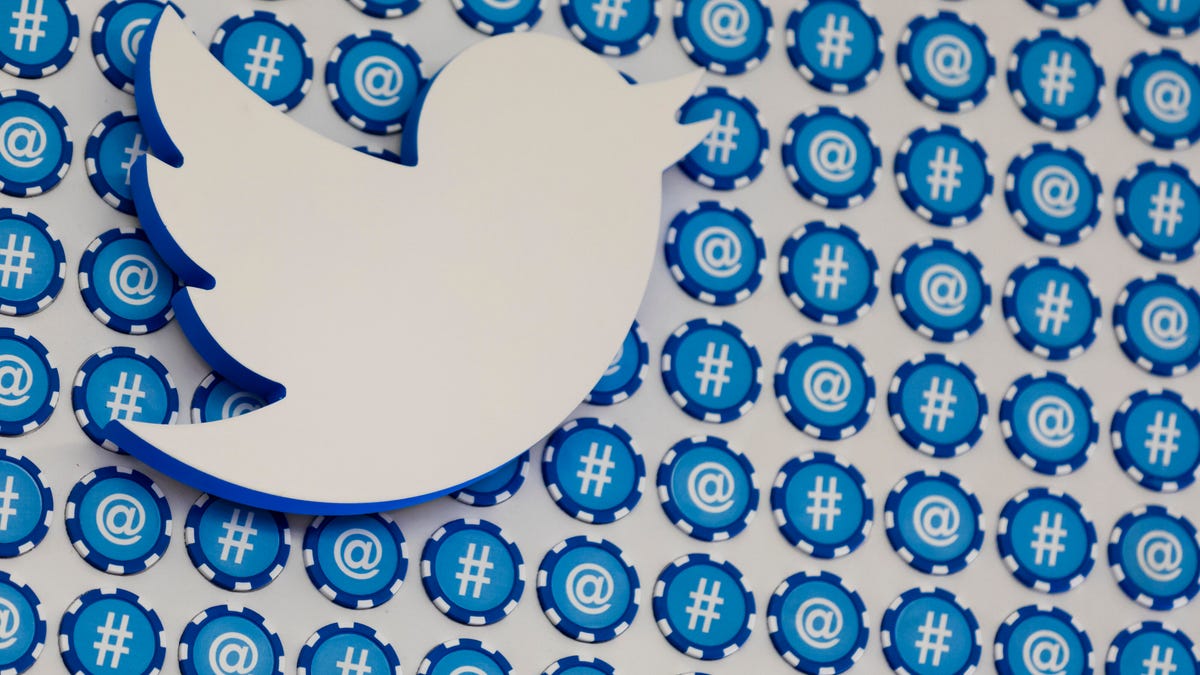Twitter hits $1 billion in revenue as it draws in more users
Heading into an election year, Twitter banned political ads but still saw healthy growth in revenue.

Twitter announced its first billion-dollar quarter.
Twitter on Thursday posted better than expected quarterly revenue, a surge that comes as the social network tries to distinguish itself by banning political ads. It was Twitter's first billion-dollar quarter.
The company also continues to attract new users. In the fourth quarter, the number of monetizable daily active users -- people who log into the site daily and see ads -- hit 152 million, up nearly 21 percent from the 126 million in the same period last year.
"Q4 was a strong finish to the year," Twitter CFO Ned Segal said on a conference call with Wall Street analysts Thursday morning. The growth in daily users, he said, "was largely driven by product improvement."
The company's stock rose more than 15% in early trading Thursday to around $38.50 per share.
Twitter CEO Jack Dorsey pointed to work that the company has done to make the service more appealing to new users, including its efforts to help people find and follow topics they're interested in. He also spoke about improving the "health" of public conversations -- that is, clearing out bad actors such as bots and trolls, including those spreading misinformation.
"We believe our work on health is a growth vector for us over the long term and fuels more conversations on Twitter," Dorsey said on the call. "Misleading information is probably the biggest challenge facing us and our industry. This will be a key focus for us."
The executives also looked ahead to big events this year such as the Summer Olympics and elections around the world, including a presidential election in the US. For the Olympics, Segal pointed to improvements in how Twitter uses live and stored video, saying Twitter will have "near real-time highlights of the most important events."
There was one sour note in the fourth-quarter financials: Rising costs during the quarter put a squeeze on the company's net income.
As it seeks to improve its appeal to users and drive further growth, Twitter plans to boost its headcount by 20% or more in 2020, especially in the areas of engineering, product, design and research. That and other factors in turn are likely to increase costs and expenses for the year by approximately 20%, Twitter said.
The company also will be working this year toward opening a new data center.
Like other social media sites, Twitter has grappled with misinformation and disinformation spreading on its service. Though it's taken down fake accounts, Twitter hasn't gotten the problem under control. Recently, Twitter users spread false claims about the coronavirus, as well as about electoral fraud ahead of Monday's Iowa caucuses.
Twitter has made high-profile attempts to address these problems. In a series of tweets last year, Dorsey said the company would ban political ads because reach "should be earned not bought." The move distinguished Twitter from social media heavyweight Facebook, which puts almost no limits on what politicians can say on its platform. Twitter this week doubled down on its efforts to combat misinformation, saying that in March it will begin labeling -- and in some cases removing -- manipulated media. The policy covers deepfakes, which are videos that use artificial intelligence to make it seem like people are saying or doing something they didn't.
It's also testing other features that could drive more positive conversations on the site. In November, the company rolled out a tool to hide replies, allowing users to filter out irrelevant, off topic or hurtful remarks. The social network plans to experiment with a new feature that would give people the ability to choose who can reply to their tweets.
In the fourth quarter, Twitter brought in $1.01 billion in revenue, up 10 percent from a year earlier and beating the $996.73 million projected by analysts in a Thomson Reuters survey. For the current quarter, the company expects revenue to reach $825 million to $885 million.
Segal cited Disney Plus as an example of how it served advertisers in the quarter. "We were able to help them with a critical launch," he said.
The company earned 15 cents per share in the fourth quarter, falling short of expectations of 18 cents per share. Excluding stock-based compensation and other expenses, the company earned 17 cents per share, below projections of 29 cents per share.
That shortfall stemmed in part from a 22% jump in costs during the quarter compared with the same period a year ago.
Dorsey acknowledged Thursday that Twitter still makes users "do a ton of work" to find and follow accounts to fit their interests and that while many people are aware of the service, their knowledge of it is often second-hand.
"A lot of people see tweets every single day. They see them on television, they see them in newspapers. We haven't given them enough reason yet to come to the app and utilize it themselves," he said. "Ultimately [getting them on board] will come down to what people experience when they first download the app or when they first open Twitter.com."
Originally published at 4:19 a.m. PT on Feb. 6.
Updated 7:25 a.m PT: Adds details from Twitter's conference call.



